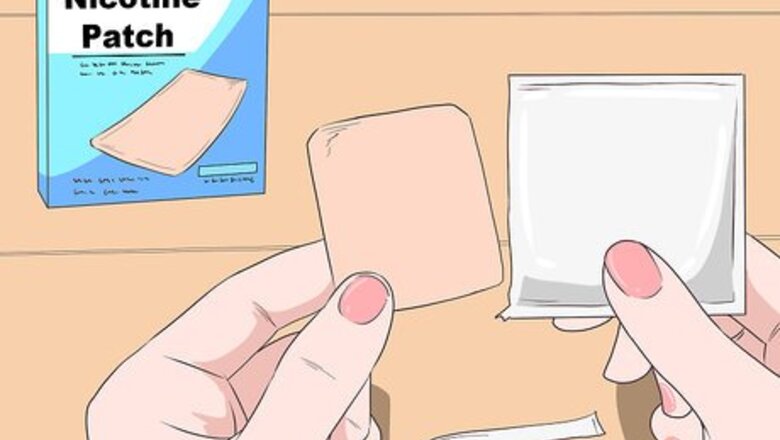
views
Placing the Patch
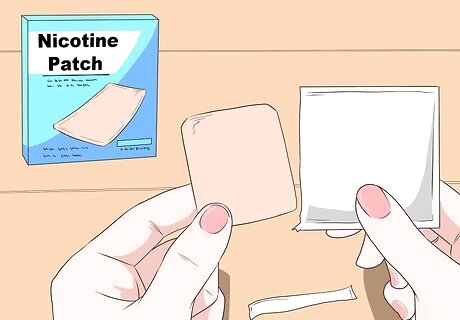
Remove the patch from the packaging. Pull open the box. Inside, you will find a bunch of individually-wrapped patches. Tear open 1 of these pouches or snip it open with a pair of scissors. To avoid damaging the patch, open the pouches from the ends. Some pouches may have a dotted line on 1 end. Follow the line to avoid damaging the patch.
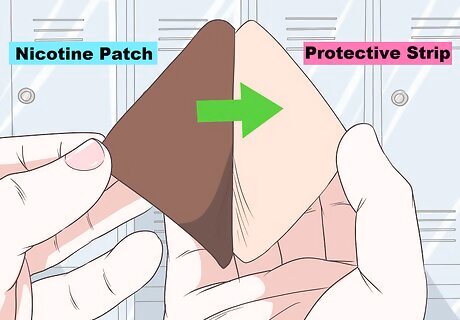
Peel the protective strip off the patch. Slide the patch out of the wrapper. Look for a silver or clear-colored coating on 1 side of the patch. It has a line down the middle dividing it, similar to the strip on a sticky bandage. Hold the patch’s sides and use the dividing line in the middle to peel off both halves of the protective coating. Avoid touching the sticky part of the patch, which is under the protective strip, as much as possible.

Select a smooth area of skin on your arm or chest. Read the instructions on the box for more information on placing the patch properly. It’s meant to go on your upper arm or chest. The area has to be smooth and hairless for the patch to stick in place and work as designed. If you are hairy, shave off hair as needed to place the patch. To ensure the patch sticks, try to find the smoothest, driest, and most hairless spot possible, such as the inside of your upper arm. Avoid placing the patch in any spots that are oily, irritated, burned, or broken out. Also avoid placing it on a tattoo, since it’s uncertain how this affects the patch.
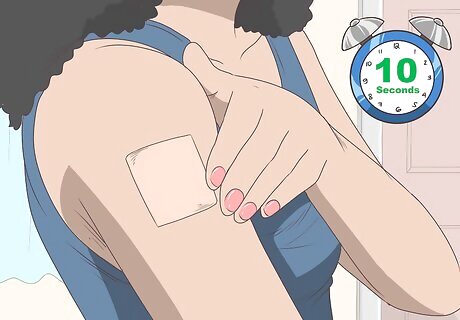
Press the patch in place for 10 seconds. Rest the patch on the heel of your palm with the adhesive side up. Press it to the area of skin you selected and count to 10 as you hold it in place. It’s super sticky, so it shouldn’t come off after this. Make sure the edges of the patch are firmly against your skin. You can use your fingers to lightly press down any spots that feel loose.
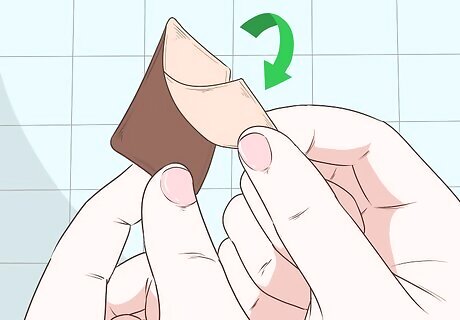
Put the protective strip back in the pouch. Find the backing halves you removed earlier and slip them into the patch’s pouch. Save the pouch by slipping it back into the box. It's useful for disposing of the patch later. Some boxes include a disposal tray to hold used pouches. Always keep the patches and wrappings out of the reach of children and pets.
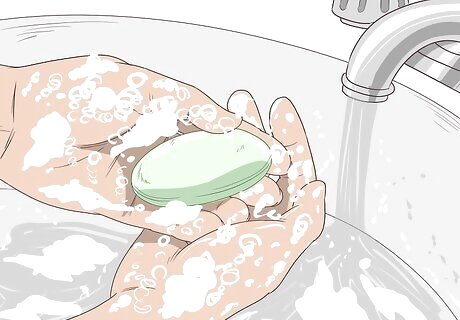
Wash your hands with soap and water. Touching the patch leaves nicotine on your hands. Take precaution by washing your hands immediately after handling a patch. Otherwise, you could end up touching and irritating your eyes and nose.
Discarding and Replacing Patches
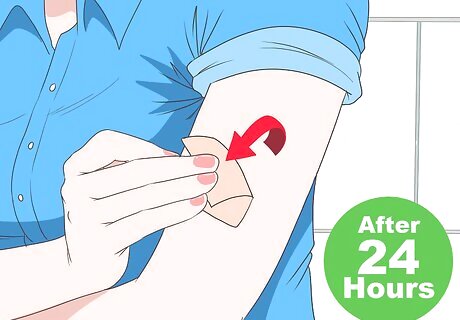
Remove the patch after 24 hours. Again, read the directions on the package for exact instructions on when to remove the patch. Each patch lasts between 16 to 24 hours and usually needs to be changed the next day. Peel the patch off your skin when it's time to remove it.
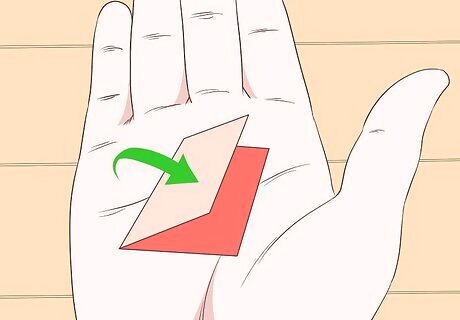
Press the patch’s sticky sides together. Hold the patch in your hand with the adhesive side facing upwards again. This time, fold it in half. Bring both halves of the adhesive together and press them until they stick to one another.
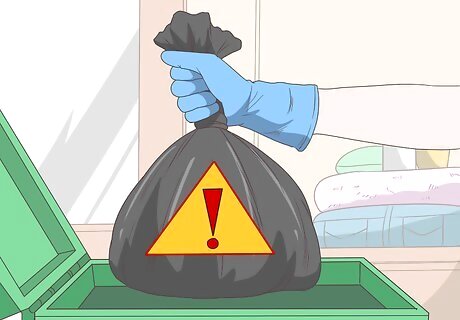
Dispose of used patches in a sealed trash bag. The patches can be safely thrown away with the rest of the trash. Make sure the trash bag is covered or tied shut. Used nicotine patches are still poisonous to small children and pets. Alternatively, look for medical waste disposal units in your area. Some medical facilities offer this service along with some governments throughout the year. Contact your local government for more information.
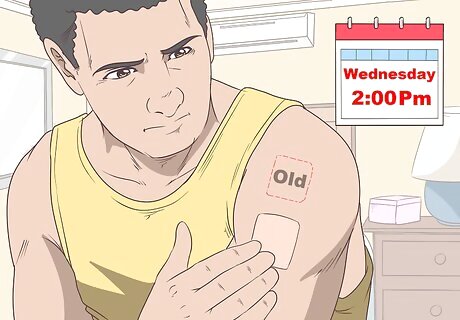
Apply the next patch to a different skin area to avoid irritation. You can use the same general area, such as your upper arm, for the new patch. However, avoid placing the patch in the same exact spot as the old one. Apply the new patch by tearing off the backing and pressing it in place. Don’t forget to wash your hands again after handling the patches.
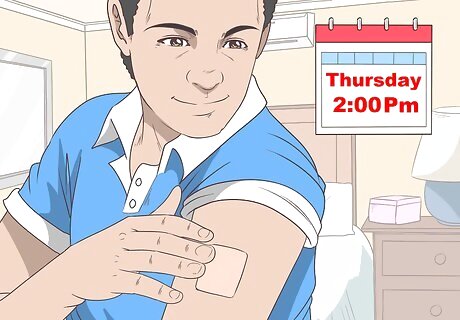
Put on a new patch at the same time every day. Set up a schedule to change the patches. It’s no secret that people sometimes forget to take medications on time. Striving to put the patch on at the same time daily helps turn it into a routine so you never miss a dose.
Taking Health Precautions

Research negative drug interactions before using the patches. Get a doctor’s approval if you are using drugs for high blood pressure, heart palpitations, or diuretics. Mixing nicotine patches with caffeine, alcohol, vitamins, and acetaminophen, or Tylenol, can also be an issue. Drugs for anxiety and depression, such as Wellbutrin, also interact with nicotine patches. Always let your doctor know any drugs you are taking to avoid adverse reactions.

Speak to a doctor if you are pregnant or breastfeeding. Get in touch with a doctor right away. Although patches are safer than smoking, the nicotine may still cause harm to the child. The doctor can advise you on limiting or stopping the patches. The best option is to stop using nicotine entirely.
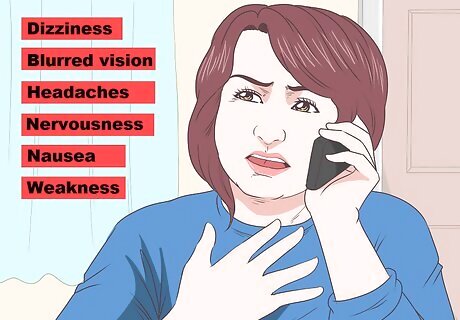
Call a doctor immediately if you experience a rapid heartbeat. It’s rare, but nicotine can raise your heart rate or make your heart’s rhythm irregular. Monitor your heart rate and also be aware of any dizziness, blurred vision, headaches, nervousness, nausea, and weakness you experience. Stop using the patches and come up with an alternative plan with your doctor.
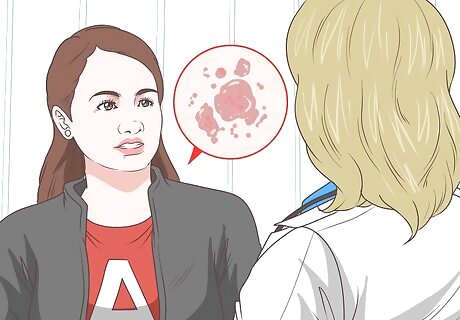
Tell your doctor if you experience severe allergic reactions. Anyone allergic to adhesive tape should avoid the patches by default. Note any rashes or swelling forming under the patch. If it is severe or doesn’t fade over a few days, stop using the patch and visit a doctor. A little bit of redness and swelling is normal when first applying patches, but it should go away in time.
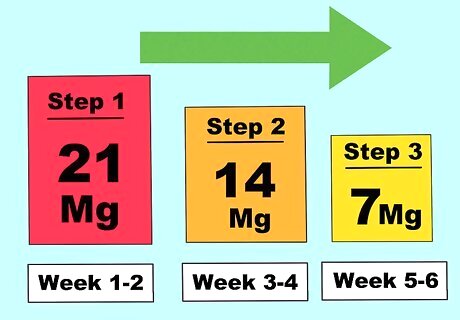
Switch to a lower dose after 2 weeks when quitting nicotine. Nicotine patches are sold at different strengths. Start with the patch you need and, if you feel comfortable after 2 to 4 weeks of use, go to the next lowest dose. Continue doing this until you’re done with nicotine entirely. This slow decrease reduces withdrawal symptoms. Start with the 21 mg patch if you smoke more than 11 cigarettes in a day, and the 14 mg patch if you smoke less than that. Since these patches are sold over the counter, this is something you can do on your own. However, contact your doctor if you have any concerns.


















Comments
0 comment